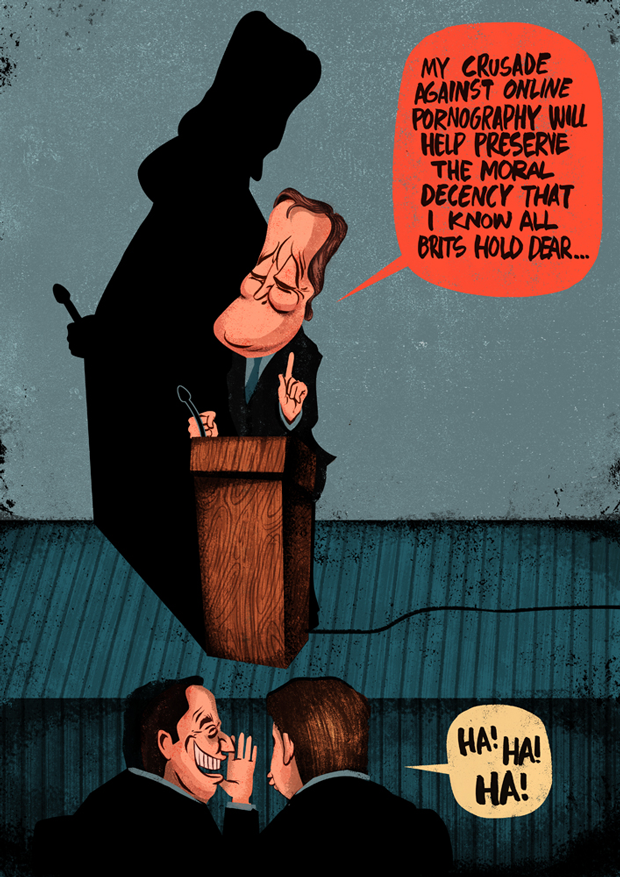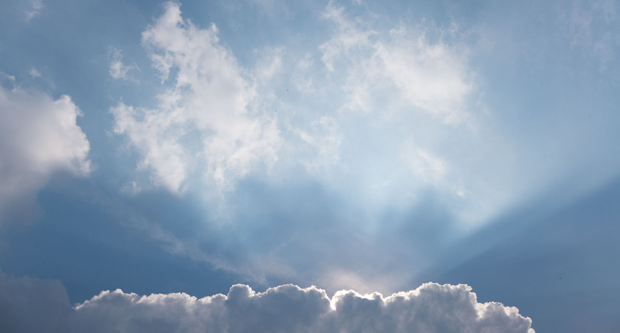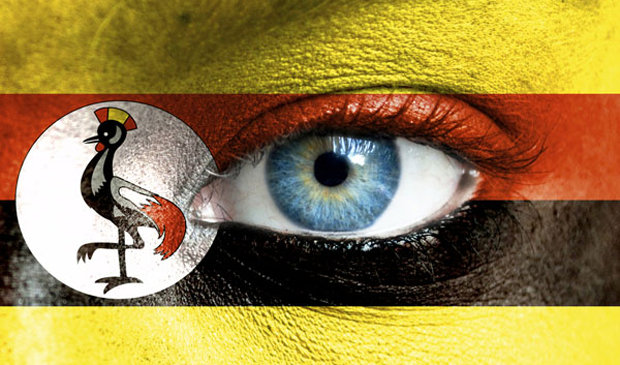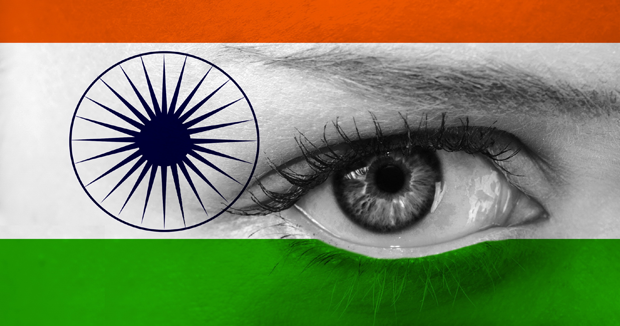Index relies entirely on the support of donors and readers to do its work.
Help us keep amplifying censored voices today.


“Three men walk into a bar.” It’s the set-up for most of the jokes I remember. They’re the kind of jokes that the drunk great-uncle tells at Christmas whilst you titter awkwardly into your fruit cake: often racist, often sexist and always offensive.
Let me tell you a joke.
A girl walks into a bar. She’s tall and blonde, with a privately-funded white smile. My male friend sitting next to me proceeds to ogle her.
“Fit,” he proclaims, “fit as.”
Another male friend laughs. “Don’t even bother going there, mate,” he says, nodding towards the girl. “She’s CU.”
The first friend looks back at the girl and then down at his drink ruefully. “CU,” he says, the two syllables hammer blows in the final nail of the coffin. CU. Two letters, spelling out abrupt endings to chat-up attempts, awkward pauses between strangers during Fresher’s Week; two letters deemed sufficient to define and dismiss a person in a heartbeat. CU: The Christian Union Society. It isn’t a particularly funny punch line.
I’m not a religious person. I think of myself as an agnostic, happily perched on the fence swinging my legs and waving to those either side of me. However, as a chorister in York Minster cathedral from the age of eight to thirteen, I grew up with a healthy respect for religion. Each day I was surrounded by people who had dedicated their lives to God. Although you may question it or disagree with it, it’s hard not to wonder at faith that strong.
Naively, when I arrived at university last September, I believed that other students would also hold a similar view. I imagined students having heated debates- over politics, religion, music, life- before sharing a beer, respecting the each other’s right to an opinion. Instead, university proved a Pandora’s Box of religious stereotypes. Sitting in a friend’s room during Fresher’s, when our conversation turned towards a boy we both knew to be in the CU society, the friend shook her head.
“I don’t understand them,” she said, “They’re all just brainwashed.”
At most universities, there are a number of faith-based societies, ranging from J-Soc (the Jewish Society) and ISoc (the Islamic society) to MethAng (the Methodist and Anglican society). There are certain stigmas and stereotypes attached to all of them, in the exact same way ‘the rugby lad’ has become a typecast. However, it is the CU which seems to be under the most scrutiny by students.
Right from my first week I was aware that being in CU somehow marked you out. Membership rendered you a lesser student, automatically barring you from sex, alcohol and nights out- the ‘key’ components of the university experience. I’m far from the only student aware of these stereotypes. Robin, a student at Canterbury Christ Church, says “Some people might not think they’re ‘cool’ if they join a certain religious group. They may feel alienated from other students.”Georgie, a student at Warwick, agrees. “There is a stigma, but more so about Christians than any other religion. Stereotypical faith member as far as I can tell tends to be female, and really smiley and keen to talk about their religion.”
American teen-culture has done much to establish and enforce this perception. In films like Easy-A and television shows such as Glee, religious- and specifically Christian- High School clubs and cliques are portrayed as self-righteous, its members ‘Bible-bashers’. The focus is often on student celibacy. One scene in Glee shows a meeting of the ‘Celibacy Club’. The club is portrayed as absurd; at the mention of the word ‘contraception’ its president Quinn shouts “Don’t you dare mention the C-word!” The female members are also shown as teases: “Remember the power-motto girls: ‘It’s all about the teasing and not about the pleasing.’” As shown by my friend in the bar, this latter stereotype has been particularly successful in its journey across the pond.
Examining the various stereotypes surrounding CUs, I became curious as to what its members thought of them. Jessie, a first-year CU member at Exeter, says she finds people’s preconceptions hard to cope with. “Telling people you’re a Christian when you come to uni, before people know you, is terrifying ,” she explains, “people do tend to form an opinion about you that you’re a ‘bible basher’ or a ‘goodie goodie’ type person and I know I struggled, and still do struggle with that!” Another anonymous member told me “I think there is definitely some stigma. People are always shocked to learn that some CU people enjoy drinking and going out, for example.”
Some university CUs are actively trying to combat these assumptions. ‘Text A Toastie’ is a popular scheme aimed at getting CU members and non-members in dialogue; students are invited to text a question about Christianity with the promise that a member of CU will arrive at your door with a free toastie and answer to your question. Some students are less than impressed by the scheme. Robin says “I personally think it’s a shame that for some people to feel comfortable speaking about religious issues there has to be food involved.” However, what it does succeed in proving is that Christians are not a clique from a teen-movie, but a group open to discussion and debate. Today university students are lucky enough to have religious freedom and the facilities to express it.
Now we have another goal: freedom from stereotype.
This article was originally published on April 29, 2014 at indexoncensorship.org

(Photo illustration: Shutterstock)
As a master student of Conflict and Development at the University of Ghent, Jos Van Steelandt will write a dissertation on the subject of censorship on and self-censorship within the media in Uganda. Because of his background as a historian specialised in Ugandan media-history and his interest in human rights, he chose this politically sensitive topic. In July, he will be conducting interviews with journalists working in Uganda. He will be keeping Index on Censorship up to date on his research during his trip.
In Uganda, journalists are not only dealing with outright censorship. It seems the government of president Yoweri Museveni is employing a strategy that is aimed at pushing journalists towards self-censorship using a broad range of measures. Although the Ugandan media has a very strong tradition of critical reporting some journalists are probably more prone to self-censor.
The use of force by its security forces serves to stifle critical voices appears widespread. A local human rights organisation, Human Rights Network for Journalists-Uganda, states in its latest report that in 2012 there were 124 violations of press freedom. A staggering 83% of these violations against journalists were committed by state-actors, among which police forces incorporate the large majority of the perpetrators. The structural nature of these violations and especially the contexts of the violations seems to suggest that this would be the result of an active government policy.
Apart from this outright aggression, the security forces in cooperation with the Uganda Communications Commission are able to close down editorial offices, as happened to one of Uganda’s leading newspapers, The Monitor, in 2013. This newspaper, known for its critical stance towards the government, was shut down for a couple of days after publishing a leaked confidential letter by General Sejjusa, which contained very compromising information about president Museveni’s familypresident. This event underlined to Ugandan news organisations that publishing on politically sensitive topics is not without risk.
Security forces also create an atmosphere in which critical reporting is discouraged by arresting journalists arbitrarily. Renowned Ugandan journalist Andrew Mwenda, for instance, was arrested 16 times. Most of the journalists who are arrested, are released shortly after, but the message towards journalists is once again clear.
Uganda’s legal code is another possible cause of self-censorship. Various laws give the government and security forces the possibility to constrain essential freedoms and even contradict the Ugandan constitution. The Public Order Management Bill, the Uganda Communications Act, the Press and Journalist Act and the Penal Code Act contain provisions that can be and are being used to hamper journalists. Journalists are often sued for libel or sedition or get bogged down in other lawsuits concerning their work. Journalists are made painfully aware that critical reporting implies walking the line within this legal framework.
The theory of the ‘chilling effect’ suggests that Uganda’s legal regime creates the possibility to clamp down on journalists and will have negative consequences on their work. This regulatory environment, in combination with the threat of violence and arrest, could make the large majority of journalists working in Uganda less willing to cover sensitive topics or could make them use mitigating discourse in their reports.
This July, I will conduct interviews with journalists of different news organisations working in Uganda. In these interviews, I will ask them for their personal experiences working as a journalist, but also ask them for the stories they think are interesting about other journalists who have had a run-in with the state. These stories, called control parables, that circulate among journalists, can tell us a lot about what journalists consider behaviour that will result in a run-in with the state. It can show us in which way most journalists will censor themselves even though the state hasn’t explicitly told them so. When we lay bare these mechanisms and research why some journalists are more vulnerable to self-censor, we can begin to think about possible measures that donors or NGO’s can take to make journalists less prone to self-censor on politically sensitive but still important issues. These possible measures include providing insurance or legal protection for journalists and campaigning to implement some sort of Chilling-effect principle in the Ugandan legal code. This principle is being implemented in the European Court of Human Rights and can be invoked when a certain law threatens to impose silence upon journalists in cases of politically sensitive topics.
Three more months and I’m off to do my fieldwork in Kampala, Uganda. I will try to bring you the stories of the journalists I interview and share the experiences they encountered working as a journalist in ‘the pearl of Africa’. I’ll keep you posted!
This article was posted on April 25, 2014 at indexoncensorship.org

(Photo illustration: Shutterstock)
The cauldron has always been simmering, despite abundant shibboleths about this election not being about hate or Hindutva (the communal political ideology of the Hindu Right wing) but about development.
Therefore it came as no surprise when on 19 April, the Vishwa Hindu Parishad’s (VHP) International President Praveen Togadia exhorted a mob in Bhavnagar to storm a house which had recently been purchased by a Muslim businessman. And in case he refused to vacate the house within 48 hours, Togadia raged, go after him with stones and tyres. After all, since those who went on the rampage in the 1984 Delhi riots have enjoyed impunity, there’s nothing to fear, he thundered. Ram Madhav, a senior functionary of the RSS (Rashtriya Swayamsevak Sangh), stoutly defended Togadia. But the Bharatiya Janata Party (BJP) and its prime ministerial candidate Narendra Modi have remain tight-lipped about the entire affair.
It is unfortunate, alarming, but true that hate propaganda has always yielded rich political dividends, and the BJP and its allies of the Hindu right have been frontrunners in making the most of it. If that wasn’t bad enough, the Election Commission, the supreme authority in charge of managing and conducting polls, has been woefully inept at dealing with this malaise. Consider this, Amit Shah, Modi’s henchman and campaign manager, got away with a mere censure after egging on people in riot-torn Muzaffarnagar to vote for the BJP if they wanted revenge on Muslims.
The fault doesn’t lie with the Election Commission, though. It is the lacunae in the laws which allow the purveyors of hate and bigotry to have a free hand. India’s election law prescribes a “Model Code of Conduct” which prohibits incendiary speeches, especially those pandering to religion and seeking to stir up communal violence. But mere prohibition, without adequate authority for imposing meaningful punishment which acts as a deterrent, is not of much use. And it is here where the commission’s hands are tied. The code does not have any legal teeth, so a candidate caught delivering hate speeches cannot be debarred. For instance, in 2009, Modi had a crowd baying for the blood of Muslims, but the commission’s chief stated that he couldn’t do much except “rebuke”.
The cynical subterfuge adopted by political parties aggravates the situation. Immediate legal action is ruled out, since the law permits a candidate’s election to be challenged only after the results are declared, thereby giving ample opportunity to the poisonous tree of hate to bear its bitter fruit. In the meanwhile, the offenders parrot vehement denials, knowing very well that dilatory tactics only work in their favour. Modi did it 2002, engaging in protracted sparring with the Indian Supreme Court, and in 2007, the BJP’s rebuttal of charges of having widely disseminated a CD containing communally inflammatory speeches fell apart only when a sting operation by an investigative journalism magazine exposed all the lies.
More insidious than explicitly incendiary speeches is what can be termed as religious electioneering, that is, canvassing for votes in the name of religion. It’s a tried and tested strategy of the BJP and its allies, particularly militant Hindu organisations like the RSS and VHP. This is usually done by glorifying Hinduism and pandering to a manufactured sense of victimhood, which, in the political arena, inevitably morphs into vilification of “the other”, “the minorities” — Muslims and Christians, primarily the former. In BJP-ruled Madhya Pradesh in central India, the RSS distributed pamphlets urging Hindus to vote in full strength in order to put the minorities in their place. The supreme court is primarily to blame for this state of affairs, because in a 1996 decision, it erroneously conflated Hinduism with the communal political ideology of Hindutva and acquitted a demagogue notorious for his Islamophobic screed.
It would be a mistake to believe that hate speech is the sole preserve of the militant Hindu Right. Azam Khan, representing the Samajwadi Party, remains defiant about his tirade, while Akbaruddin Owaisi, experienced in the politics of hate, remains unscathed due to the patronage and skulduggery of the Congress.
The Togadia saga isn’t over yet. Going by standard modus operandi, not only has he has alleged a political conspiracy to frame him, but has also slapped a legal notice on the television channels and newspaper which reported his Saturday’s labours. Senior journalists from these channels, however, are standing their ground, contending they have video footage to prove his culpability.
Optimistic about better politics? Look at 21 April, Mumbai. With Modi on the dais, a political ally boasts that he would be the best one to teach Muslims a lesson. And the man being hailed as the next prime minister “disapproves” of “petty statements” by the likes of Togadia.
This article was originally posted on 28 April 2014 at indexoncensorship.org